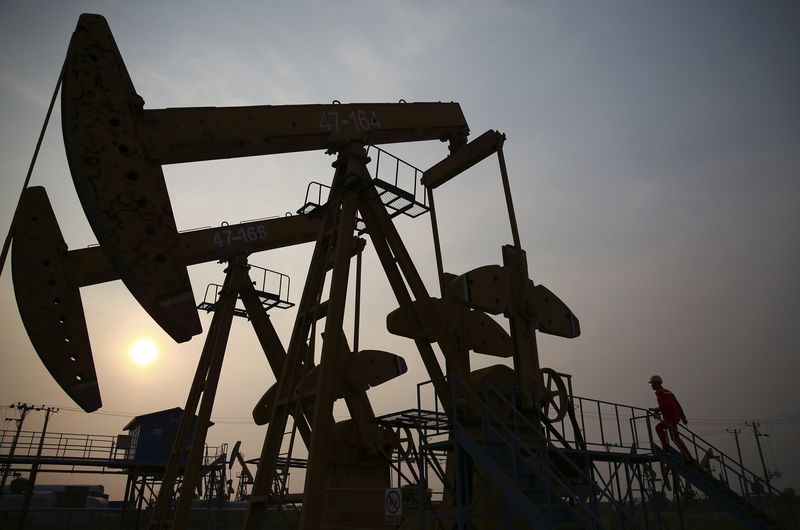By Geoffrey Smith
Investing.com -- Crude oil prices picked up a little in early trading in New York on Thursday after some reassuringly strong data from the U.S. economy, but remained essentially range-bound, with memories still fresh of Wednesday's disappointing rise in gasoline stockpiles.
By 10:30 AM ET (1430 GMT), U.S. crude futures were up 1.5% at $40.61 a barrel, while Brent futures were up 1.4% at $42.31 a barrel. Prices remain under pressure from the gradual increase in production in Libya, which is now estimated to be producing at over 500,000 barrels a day, up from barely 100,000 barrels a day in the summer. A world economy that appears to be weakening again as Covid-19 spreads rapidly in Europe and North America is ill-positioned to absorb the extra supply.
U.S. Gasoline RBOB Futures, which had slip sharply to a two-week low on the back of the Energy Information Administration's report on Wednesday, were up 1.7% at $1.1600 a gallon. They're still down over 11% in the last two weeks.
The EIA had reported a rise of nearly 2 million barrels in gasoline stocks last week, in stark contrast to expectations of a draw of roughly the same size. The amount of gasoline supplied to the domestic market is now some 10% below the five-year average. Demand for jet fuel is faring even worse, with supplies running at more than 40% below the five-year average.
The figures suggest that the fresh wave of Covid-19 infections, which is hitting the upper Midwest particularly hard, is eroding consumer confidence and eating into discretionary travel.
There were a couple of glimmers of hope from the U.S. economy earlier: existing home sales rose to their highest monthly level since 2006 in September, while initial jobless claims fell much more sharply than expected last week.
News from the oil and gas sector was more mixed, with Bloomberg reporting that Exxon Mobil (NYSE:XOM) CEO Darren Woods had warned staff of a round of upcoming - but unspecified - job cuts. Pioneer Natural Resources (NYSE:PXD) CEO Scott Sheffield indicated he thought a turning point in the cycle was still some months away, telling the Financial Times in an interview that he expects Brent levels to return to $50 by the second half of next year. - "when demand starts coming back after vaccines are distributed throughout the world.”
